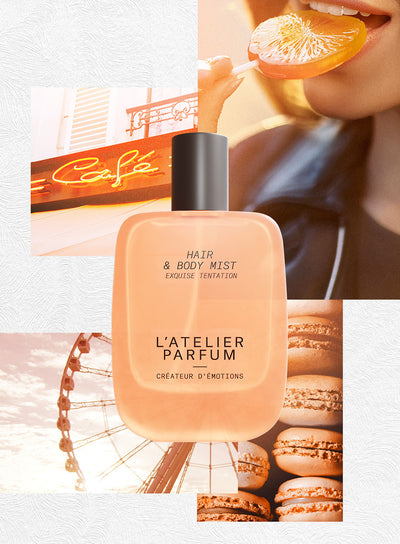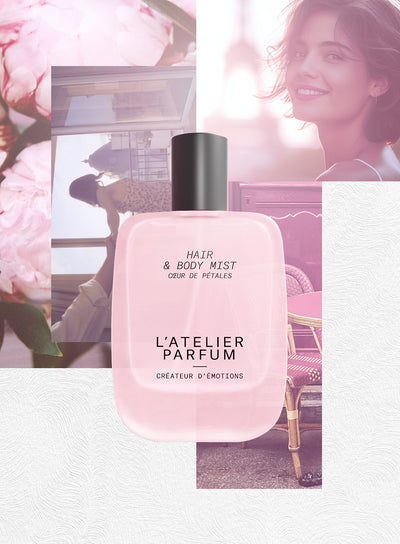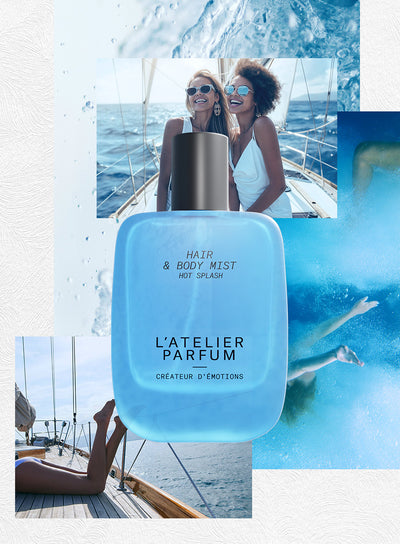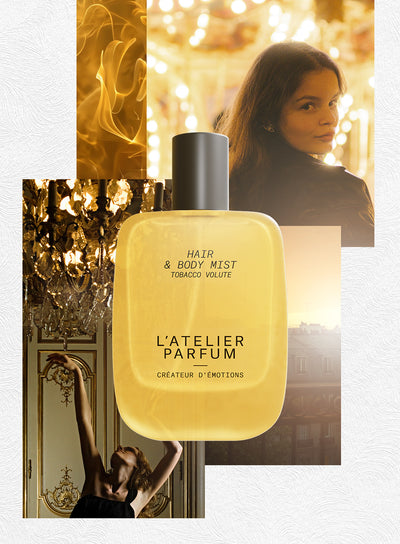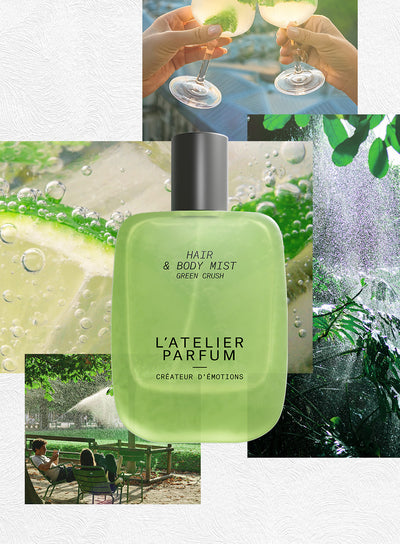Louis XIV and the Art of Perfume at Versailles
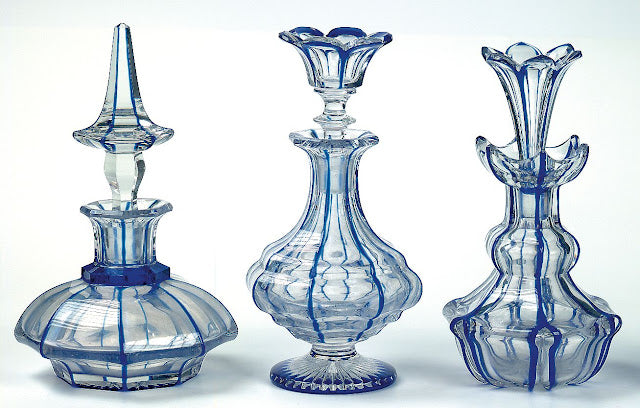
Olfactory Magnificence in the Service of Power
Louis XIV, the Sun King, sought to shine through the splendor of his palace, which became a model of influence throughout Europe. Each day, between three and ten thousand courtiers, artists, ambassadors, and visitors would gather there. In a Versailles where comfort was still rudimentary, perfume played a crucial role: both hygienic, medicinal, and social, it served to mask odors, protect health, and above all, to distinguish oneself with refinement.
Louis XIV and the Perfumed Fountains
From 1661, the monarch initiated the construction of Versailles and gave new impetus to the arts and literature. The French court became the epicenter of luxury, elegance, and pleasure. It was under his reign that perfume established itself as a symbol of power, reserved for the elite, much like it once was for the gods of antiquity.
In 1693, Simon Barbe, author of Le Parfumeur françois, described Louis XIV as the “most fragrant king,” less to suggest a pleasant body odor than to highlight his monarchic radiance. However, Saint-Simon, in his Memoirs, offered a much less flattering portrayal of the king’s scent.
At court, perfumers created custom eaux de senteur for an illustrious clientele eager to set themselves apart by their scent. Fabrics were soaked in fragrant essences, scented lotions were applied, and creams enriched with vanilla or cocoa were used. Even tobacco was aromatized, as the Prince of Condé—fond of personalized scents—demonstrated.
Spaces Devoted to Fragrance
To charm his mistresses—especially Louise de La Vallière, Marie-Angélique de Fontanges, and the famous Madame de Montespan—Louis XIV developed a marked taste for heady perfumes. He commissioned the architect Le Vau to build a small château in the park of Versailles: initially named Trianon de Flore, then Trianon de Porcelaine, it was surrounded by rare and powerfully scented flowers, creating an atmosphere saturated with fragrance.
In the flowerbeds designed by Le Nôtre, floral species were selected for their aromatic intensity: jasmine, tuberose, nutmeg, orange blossom... Simon Barbe specified: “These are the strongest scents. They are chosen because of their use in leather, employed to cover women’s bodies, animals, and other similar items.”
Toward the end of his reign, Louis XIV turned away from complex compositions and favored only orange blossom, which he even had flowing through certain fountains of Versailles. His personal eau de senteur was extracted from bitter orange trees grown in the Orangerie, a vast structure designed by Jules Hardouin-Mansart between 1684 and 1686. The king stored nearly 2,000 crates of orange trees over three hectares.
In the final years of his life, suffering from migraines and physical discomforts, Louis XIV banned all perfumes from court, believing them to be responsible for his ailments.
Louis XV and the Perfumed Court
Under the reign of Louis XV, beginning in 1722, hygiene improved, and the elite began to master the art of “smelling good.” After the upheavals of the Regency, the court regained a carefree spirit, and perfume became omnipresent. Scents were changed daily—sometimes even hourly. Only philosophers, in an act of rebellion, rejected refined scents in favor of austere body odors.
This era earned the nickname “the perfumed court,” as the use of perfume was highly codified. Chronicler Louis-Antoine Caraccioli wrote in 1768 that “everything is perfumed, from wall paneling to thoughts,” illustrating how the obsession with fragrance extended well beyond the skin.
The king himself participated in this olfactory culture: every January 1st, he gifted the ladies of the court perfumes of his own creation. The Marquise de Pompadour, a great lover of cosmetics and perfumes, spent nearly 100,000 livres a year on fragrance. Her influence was decisive in refining these practices. She supported the Sèvres porcelain factory, which produced delicate flacons, and offered foreign diplomats small bottles of rose essence distilled at Versailles—some, it is said, by the king himself.
At the Grand Trianon, an aromatic garden was dedicated to the cultivation of plants and flowers used in the preparation of royal eaux de senteur, confirming perfume’s central role in court life.
From Heavy Animalic Perfume to More Subtle Fragrance
Now, for both men and women, it was about becoming “light insects that shine in their ephemeral adornments, fluttering and shaking their powdered wings,” as described in The Encyclopedia by Diderot and d’Alembert. The heavy animalic perfume soon gave way to airy, balsamic, and floral scents. Noses now trained in hygiene—an idea newly arrived from England—could appreciate more delicate fragrances.
Perfume was no longer used merely to shield oneself from others or to avoid offending with unpleasant odors, but rather to seduce.
While in the 17th century perfume had no place in the codes of gallantry—first recorded in 1644—it now held a prominent role in masculine elegance.
It was also at the court of Louis XV that eau de Cologne arrived at Versailles, brought back by soldiers returning from the Seven Years’ War. Courtiers—including the highly hypochondriacal Louis XV himself—began using it for its invigorating and tonic properties.
Aware of the health benefits of scented baths, the king had a new bathroom installed at Versailles in 1760, specially designed for his perfumed ablutions.
Versailles Today: The Revival of the Perfumers' Garden
Three centuries after the golden age of perfume at court, the Palace of Versailles has revived this tradition by opening a Perfumers’ Garden to the public in 2023. Nestled in a quiet corner of the royal grounds, this once-private garden has been fully restored in the spirit of the 17th century, offering visitors a sensory journey through the very plants and flowers that once shaped the olfactory world of the court.
Designed as a living evocation of the time of Louis XIV and Louis XV, the garden features more than 300 plant species chosen for their historical role in perfume making: centifolia rose, jasmine, lavender, iris, tuberose, and mignonette among others. Medicinal herbs, fragrant shrubs, and rare essences echo the secrets of floral alchemy once practiced at Versailles.
The project was developed in collaboration with contemporary perfumers and botanists, with support from fragrance houses and artisanal partners. It reflects a broader movement to rediscover sensory heritage—where history, botanical science, and contemporary creativity intersect.
But the garden is more than ornamental; it tells an olfactory story—of a court where perfume was a full-fledged art, a tool of seduction, a marker of status, and also a form of medicine. Guided tours, distillation workshops, and immersive scent trails now allow the public to reconnect with this once-lost tradition.
As an expert from the Getty Museum noted, Versailles was once a stage for extravagance, where perfumes masked the less glamorous realities of court life. This modern-day garden, both educational and poetic, brings back the fragrant splendor of the past while fostering awareness of the fragile beauty of nature.
Learn more:
Froth and Folly: Nobility and Perfumery at the Court of Versailles
Flower power and diplomacy: Versailles perfume gardens transport public back in time
Louis XIV, the Sun King, sought to shine through the splendor of his palace, which became a model of influence throughout Europe. Each day, between three and ten thousand courtiers, artists, ambassadors, and visitors would gather there. In a Versailles where comfort was still rudimentary, perfume played a crucial role: both hygienic, medicinal, and social, it served to mask odors, protect health, and above all, to distinguish oneself with refinement.
Louis XIV and the Perfumed Fountains
From 1661, the monarch initiated the construction of Versailles and gave new impetus to the arts and literature. The French court became the epicenter of luxury, elegance, and pleasure. It was under his reign that perfume established itself as a symbol of power, reserved for the elite, much like it once was for the gods of antiquity.
In 1693, Simon Barbe, author of Le Parfumeur françois, described Louis XIV as the “most fragrant king,” less to suggest a pleasant body odor than to highlight his monarchic radiance. However, Saint-Simon, in his Memoirs, offered a much less flattering portrayal of the king’s scent.
At court, perfumers created custom eaux de senteur for an illustrious clientele eager to set themselves apart by their scent. Fabrics were soaked in fragrant essences, scented lotions were applied, and creams enriched with vanilla or cocoa were used. Even tobacco was aromatized, as the Prince of Condé—fond of personalized scents—demonstrated.
Spaces Devoted to Fragrance
To charm his mistresses—especially Louise de La Vallière, Marie-Angélique de Fontanges, and the famous Madame de Montespan—Louis XIV developed a marked taste for heady perfumes. He commissioned the architect Le Vau to build a small château in the park of Versailles: initially named Trianon de Flore, then Trianon de Porcelaine, it was surrounded by rare and powerfully scented flowers, creating an atmosphere saturated with fragrance.
In the flowerbeds designed by Le Nôtre, floral species were selected for their aromatic intensity: jasmine, tuberose, nutmeg, orange blossom... Simon Barbe specified: “These are the strongest scents. They are chosen because of their use in leather, employed to cover women’s bodies, animals, and other similar items.”
Toward the end of his reign, Louis XIV turned away from complex compositions and favored only orange blossom, which he even had flowing through certain fountains of Versailles. His personal eau de senteur was extracted from bitter orange trees grown in the Orangerie, a vast structure designed by Jules Hardouin-Mansart between 1684 and 1686. The king stored nearly 2,000 crates of orange trees over three hectares.
In the final years of his life, suffering from migraines and physical discomforts, Louis XIV banned all perfumes from court, believing them to be responsible for his ailments.
Louis XV and the Perfumed Court
Under the reign of Louis XV, beginning in 1722, hygiene improved, and the elite began to master the art of “smelling good.” After the upheavals of the Regency, the court regained a carefree spirit, and perfume became omnipresent. Scents were changed daily—sometimes even hourly. Only philosophers, in an act of rebellion, rejected refined scents in favor of austere body odors.
This era earned the nickname “the perfumed court,” as the use of perfume was highly codified. Chronicler Louis-Antoine Caraccioli wrote in 1768 that “everything is perfumed, from wall paneling to thoughts,” illustrating how the obsession with fragrance extended well beyond the skin.
The king himself participated in this olfactory culture: every January 1st, he gifted the ladies of the court perfumes of his own creation. The Marquise de Pompadour, a great lover of cosmetics and perfumes, spent nearly 100,000 livres a year on fragrance. Her influence was decisive in refining these practices. She supported the Sèvres porcelain factory, which produced delicate flacons, and offered foreign diplomats small bottles of rose essence distilled at Versailles—some, it is said, by the king himself.
At the Grand Trianon, an aromatic garden was dedicated to the cultivation of plants and flowers used in the preparation of royal eaux de senteur, confirming perfume’s central role in court life.
From Heavy Animalic Perfume to More Subtle Fragrance
Now, for both men and women, it was about becoming “light insects that shine in their ephemeral adornments, fluttering and shaking their powdered wings,” as described in The Encyclopedia by Diderot and d’Alembert. The heavy animalic perfume soon gave way to airy, balsamic, and floral scents. Noses now trained in hygiene—an idea newly arrived from England—could appreciate more delicate fragrances.
Perfume was no longer used merely to shield oneself from others or to avoid offending with unpleasant odors, but rather to seduce.
While in the 17th century perfume had no place in the codes of gallantry—first recorded in 1644—it now held a prominent role in masculine elegance.
It was also at the court of Louis XV that eau de Cologne arrived at Versailles, brought back by soldiers returning from the Seven Years’ War. Courtiers—including the highly hypochondriacal Louis XV himself—began using it for its invigorating and tonic properties.
Aware of the health benefits of scented baths, the king had a new bathroom installed at Versailles in 1760, specially designed for his perfumed ablutions.
Versailles Today: The Revival of the Perfumers' Garden
Three centuries after the golden age of perfume at court, the Palace of Versailles has revived this tradition by opening a Perfumers’ Garden to the public in 2023. Nestled in a quiet corner of the royal grounds, this once-private garden has been fully restored in the spirit of the 17th century, offering visitors a sensory journey through the very plants and flowers that once shaped the olfactory world of the court.
Designed as a living evocation of the time of Louis XIV and Louis XV, the garden features more than 300 plant species chosen for their historical role in perfume making: centifolia rose, jasmine, lavender, iris, tuberose, and mignonette among others. Medicinal herbs, fragrant shrubs, and rare essences echo the secrets of floral alchemy once practiced at Versailles.
The project was developed in collaboration with contemporary perfumers and botanists, with support from fragrance houses and artisanal partners. It reflects a broader movement to rediscover sensory heritage—where history, botanical science, and contemporary creativity intersect.
But the garden is more than ornamental; it tells an olfactory story—of a court where perfume was a full-fledged art, a tool of seduction, a marker of status, and also a form of medicine. Guided tours, distillation workshops, and immersive scent trails now allow the public to reconnect with this once-lost tradition.
As an expert from the Getty Museum noted, Versailles was once a stage for extravagance, where perfumes masked the less glamorous realities of court life. This modern-day garden, both educational and poetic, brings back the fragrant splendor of the past while fostering awareness of the fragile beauty of nature.
Learn more:
Froth and Folly: Nobility and Perfumery at the Court of Versailles
Flower power and diplomacy: Versailles perfume gardens transport public back in time

